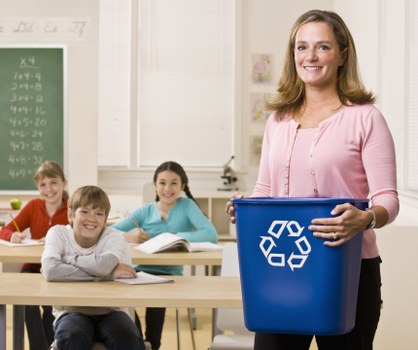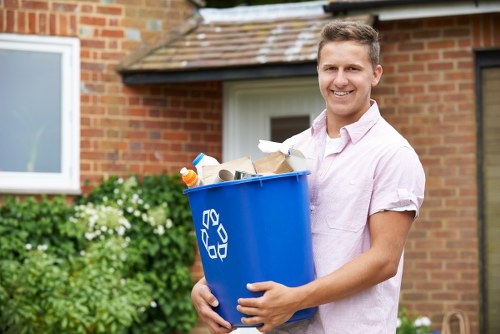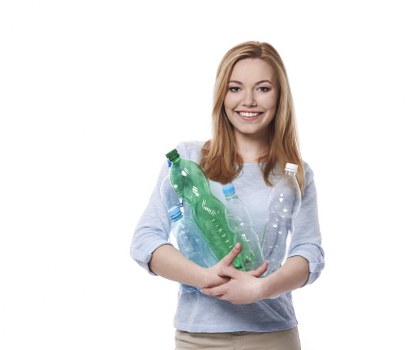White Goods Recycle in Waste Recycling

In today's environmentally conscious world, the importance of recycling has never been more apparent. Among the various categories of recyclable materials, white goods hold a significant place. White goods, such as refrigerators, washing machines, and dishwashers, are household appliances that require proper disposal and recycling to minimize their environmental impact.
Recycling white goods not only helps in reducing landfill waste but also conserves valuable resources by reusing materials like metals, plastics, and electronics components. This article delves into the process of recycling white goods, its benefits, and how individuals and businesses can contribute to sustainable waste management.
Understanding the Lifecycle of White Goods
The Lifecycle of White Goods

The lifecycle of a white good typically begins with manufacturing, where raw materials are assembled into finished products. Upon reaching the end of their useful life, these appliances become waste that needs to be managed responsibly.
Improper disposal of white goods can lead to environmental hazards. Components such as refrigerants, lubricants, and heavy metals can leach into the soil and water sources, posing risks to both ecosystems and human health.
Therefore, recycling white goods plays a crucial role in mitigating these risks by ensuring that harmful substances are handled and disposed of safely.
Key Components for Recycling

White goods contain a variety of materials that can be recycled. Some of the key components include:
- Metals: Stainless steel, aluminum, and copper are commonly found in appliances and can be melted down and reused.
- Plastics: Various plastic parts can be processed and repurposed for manufacturing new products.
- Electronics: Circuit boards and other electronic components can be extracted and recycled for their valuable metals.
- Glass: Some appliances contain glass panes that can be recycled separately.
Recycling these materials helps in conserving natural resources and reduces the need for virgin material extraction.
Environmental Benefits

Recycling white goods offers numerous environmental benefits, including:
- Reduced Landfill Waste: By recycling, the volume of waste sent to landfills is significantly decreased.
- Energy Conservation: Recycling metals and plastics requires less energy compared to producing them from raw materials.
- Pollution Reduction: Proper recycling minimizes the release of hazardous substances into the environment.
- Resource Efficiency: Reusing materials promotes a circular economy, where resources are kept in use for as long as possible.
These benefits collectively contribute to a more sustainable and healthy environment.
Economic Advantages

Beyond environmental impacts, recycling white goods also has positive economic implications:
- Job Creation: The recycling industry creates employment opportunities in collection, processing, and manufacturing sectors.
- Cost Savings: Businesses can reduce waste management costs by recycling materials internally.
- Revenue Generation: Recycled materials can be sold, providing an additional revenue stream for companies.
These economic benefits highlight the multifaceted advantages of recycling white goods.
Recycling Process for White Goods

The process of recycling white goods involves several steps to ensure efficient material recovery and environmental compliance.
Collection and Transportation: White goods are collected from various sources, including residential areas, businesses, and retail outlets. Specialized transportation ensures that these large appliances are moved safely to recycling facilities.
Pre-processing: Before the actual recycling begins, appliances undergo pre-processing steps such as:
- Disassembly: Appliances are disassembled to separate different components.
- Removal of Hazardous Materials: Substances like refrigerants and mercury-containing parts are carefully removed and treated.
- Sorting: Materials are sorted into categories like metals, plastics, and electronics for further processing.
Material Recovery

Once the appliances are disassembled, the next step is material recovery. This involves extracting valuable materials that can be reused in manufacturing new products.
Metal Recycling: Metals such as steel, aluminum, and copper are extracted and melted down to create new metal products. This process significantly reduces the need for mining new metals, conserving natural resources.
Plastic Recycling: Plastics are cleaned, shredded, and processed into pellets that can be used to manufacture new plastic items. Recycling plastics helps in reducing plastic pollution and the demand for virgin plastic production.
Electronic Component Recycling

Modern white goods are equipped with electronic components that also need to be recycled responsibly.
Circuit Boards: These contain valuable metals like gold, silver, and palladium, which can be recovered and reused.
Charging Systems: Components like capacitors and resistors are separated and processed for material recovery.
Final Processing and Manufacturing

After material recovery, the final processing stage transforms these materials into new products.
Metal Casting: Recovered metals are melted and cast into ingots, which are then used in the manufacturing of new appliances or other metal products.
Plastic Production: Recycled plastics are used to produce items such as containers, packaging materials, and automotive parts.
This final stage closes the loop in the recycling process, promoting a sustainable cycle of material usage.
Challenges in Recycling White Goods

While recycling white goods offers numerous benefits, it also presents several challenges that need to be addressed.
Complexity of Appliances: Modern white goods are complex devices with various components, making the disassembly and material separation processes intricate and labor-intensive.
Hazardous Materials: Handling and disposing of hazardous substances like refrigerants require specialized knowledge and equipment to prevent environmental contamination.
Economic Constraints

The cost associated with recycling processes can be high, especially for small-scale operations. Investments in technology, infrastructure, and training are necessary to efficiently recycle white goods.
Market Fluctuations: The value of recycled materials is subject to market demand and price volatility, affecting the financial viability of recycling initiatives.
Regulatory Compliance

Recycling white goods must comply with various environmental regulations and standards. Ensuring adherence to these regulations requires continuous monitoring and updates, adding to the operational complexity.
International Regulations: Different countries have varying regulations regarding the disposal and recycling of white goods, complicating cross-border recycling efforts.
Consumer Participation

The success of white goods recycling programs depends significantly on consumer participation. Educating the public about the importance of recycling and providing convenient disposal options are essential to increase recycling rates.
Lack of Awareness: Many consumers are unaware of the environmental impact of improper disposal of white goods or how to recycle them effectively.
Strategies to Enhance White Goods Recycling

Addressing the challenges in recycling white goods requires a multifaceted approach involving various stakeholders.
Technological Innovations: Investing in advanced recycling technologies can streamline the disassembly and material separation processes, making recycling more efficient and cost-effective.
Automation and Robotics: Utilizing automation can reduce labor costs and improve the accuracy of material sorting.
Extended Producer Responsibility (EPR)

The concept of Extended Producer Responsibility shifts the responsibility of recycling from consumers to manufacturers. Under EPR, producers are accountable for the entire lifecycle of their products, including end-of-life disposal.
Incentives for Sustainable Design: Manufacturers are encouraged to design appliances with recyclability in mind, using materials that are easier to recycle and minimizing the use of hazardous substances.
Collection Programs: EPR can facilitate the establishment of manufacturer-led collection and recycling programs, ensuring that white goods are properly recycled.
Role of Legislation and Policy

Government policies and legislation play a pivotal role in shaping white goods recycling practices.
Recycling Mandates: Laws that mandate recycling can compel manufacturers and consumers to participate in recycling programs, increasing overall recycling rates.
Subsidies and Grants: Financial incentives can support recycling businesses and research into more efficient recycling technologies.
Public Awareness Campaigns

Raising public awareness about the importance of recycling white goods is essential for increasing participation rates.
Educational Programs: Informative campaigns can educate consumers on how to dispose of white goods responsibly and the benefits of recycling.
Community Initiatives: Local recycling drives and events can engage communities and make recycling more accessible.
Partnerships and Collaborations

Collaboration between government agencies, manufacturers, recycling companies, and consumers can enhance the effectiveness of white goods recycling programs.
Industry Partnerships: Joint efforts can lead to the development of standardized recycling processes and the sharing of best practices.
Non-Profit Organizations: NGOs can provide support through advocacy, education, and facilitating recycling initiatives.
Innovation in Recycling Technologies

Investing in research and development can lead to breakthroughs in recycling technologies, making the process more efficient and environmentally friendly.
Advanced Sorting Techniques: Technologies like artificial intelligence and machine learning can improve the accuracy of material sorting.
Eco-Friendly Processing: Developing methods that reduce energy consumption and minimize the use of harmful chemicals in recycling processes.
Benefits of Recycling White Goods

The benefits of recycling white goods extend across environmental, economic, and social dimensions.
Environmental Preservation: Recycling reduces the extraction of raw materials, conserving natural resources and preserving ecosystems.
Climate Change Mitigation: Lowering energy consumption through recycling contributes to the reduction of greenhouse gas emissions.
Economic Growth

The recycling industry stimulates economic growth by creating jobs and fostering innovation.
- Employment Opportunities: From collection to processing, recycling white goods generates a wide range of jobs.
- Market Development: Growth in the recycling sector can lead to the emergence of new markets for recycled materials.
Resource Efficiency

Efficient resource management through recycling ensures that materials are reused and repurposed, reducing the strain on natural resources.
Sustainable Production: Manufacturers can rely on recycled materials to produce new appliances, promoting a sustainable production cycle.
Social Responsibility

Engaging in white goods recycling fosters a sense of social responsibility among consumers and businesses alike.
Community Engagement: Recycling initiatives can bring communities together, promoting collective action towards environmental sustainability.
Corporate Social Responsibility: Businesses that prioritize recycling demonstrate their commitment to sustainability, enhancing their reputation and customer loyalty.
How to Recycle Your White Goods

Recycling white goods involves several steps that ensure responsible disposal and material recovery.
Identify Recyclable Appliances: Determine which of your white goods are eligible for recycling. Commonly recycled items include refrigerators, washing machines, dryers, and dishwashers.
Find a Recycling Center: Locate a certified recycling facility or collection point in your area that accepts white goods.
Preparing Appliances for Recycling

Proper preparation of appliances is essential for efficient recycling.
Remove Personal Items: Ensure that all personal belongings are removed from appliances like refrigerators and washing machines.
Disconnect Safely: Unplug the appliance and follow safety guidelines to disconnect and remove components if necessary.
Scheduling Pickup or Drop-off

Depending on the recycling facility's services, you may need to schedule a pickup or personally drop off the white goods.
Pickup Services: Some recycling centers offer free or paid pickup services for large appliances.
Transportation: Ensure safe transportation of the appliance to avoid damage or injury.
Utilizing Professional Services

If handling the disposal yourself is challenging, consider hiring professional recycling services.
Benefits: Professionals can ensure the safe and efficient recycling of white goods, handling all necessary steps from disassembly to material recovery.
Cost Considerations: While there may be fees associated with professional services, the benefits of responsible recycling often outweigh the costs.
Case Studies and Success Stories

Examining successful white goods recycling initiatives can provide valuable insights and inspiration.
City-Wide Recycling Programs: Several cities have implemented comprehensive recycling programs that include white goods, achieving high recycling rates and reduced landfill usage.
Corporate Initiatives: Companies dedicated to sustainability have established in-house recycling programs, promoting environmentally friendly practices among employees.
Innovative Solutions

Innovation plays a critical role in enhancing white goods recycling.
Smart Recycling Technologies: Integrating technology such as IoT devices can optimize the recycling process by providing real-time data on appliance conditions and recycling efficiency.
Circular Economy Models: Adopting circular economy principles ensures that materials from recycled white goods are continuously reused, minimizing waste.
Future Trends in Recycling

The future of white goods recycling is poised for growth and advancement.
Advanced Material Recovery: Emerging technologies will enhance the ability to recover a wider range of materials more efficiently.
Integration with Renewable Energy: Powering recycling facilities with renewable energy sources can further reduce the environmental footprint of recycling processes.
Global Perspectives

Different regions around the world are adopting unique approaches to white goods recycling.
Developed Countries: Countries with established recycling infrastructure are leading in material recovery rates and technological advancements.
Developing Regions: Efforts are underway to build recycling capacities in developing regions, addressing growing waste management challenges.
Conclusion

Recycling white goods is a vital component of sustainable waste management strategies. By effectively recycling appliances like refrigerators and washing machines, we can significantly reduce environmental impact, conserve resources, and promote economic growth.
Collective Responsibility: Achieving high recycling rates requires the collaboration of consumers, manufacturers, governments, and recycling industries.
Take Action: Whether through proper disposal, supporting recycling initiatives, or advocating for sustainable policies, everyone has a role to play in enhancing white goods recycling.
Get Involved Today

Join the movement towards a more sustainable future by participating in white goods recycling. Contact us today to learn how you can contribute or book your service now to ensure your appliances are recycled responsibly.